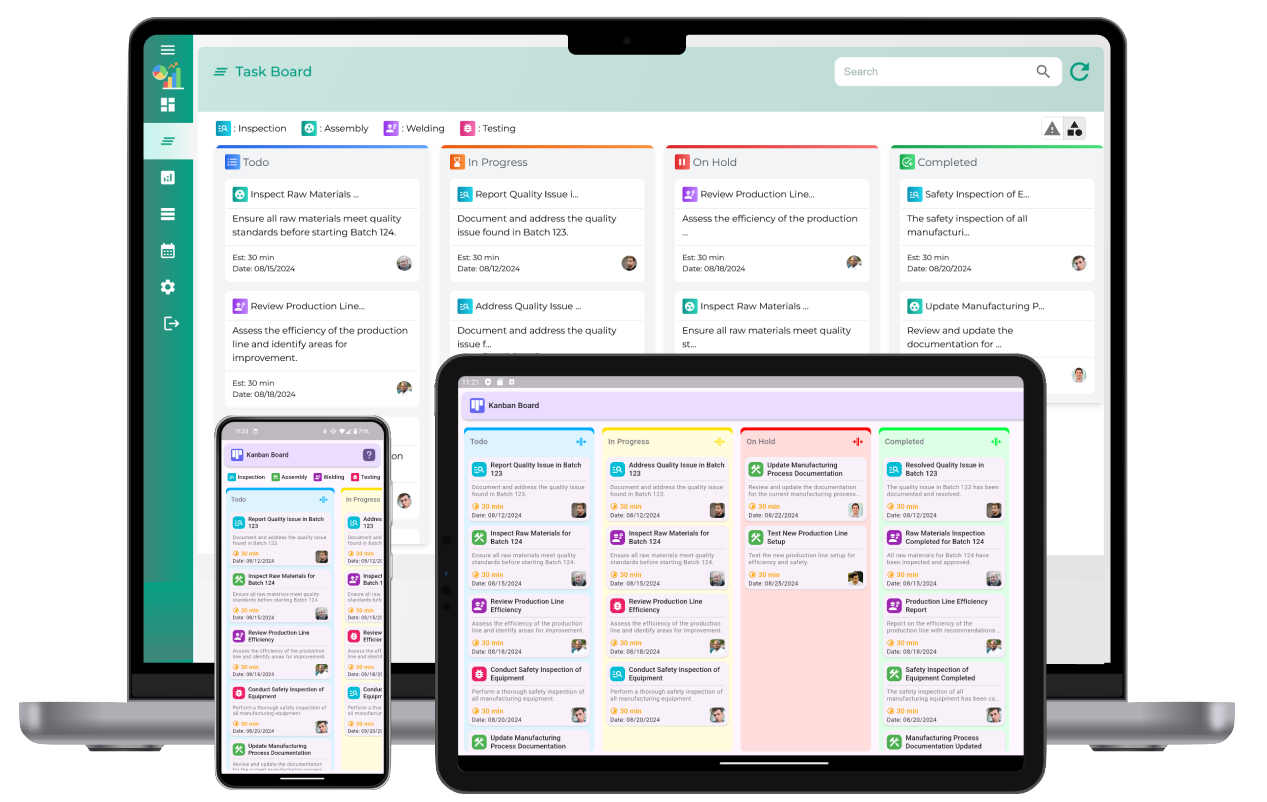What is Change Management, and why is it important?
Change Management is a structured approach to transitioning individuals, teams, and organizations from a current state to a desired future state. It is important because it minimizes resistance, ensures a smooth transition, and improves the likelihood of achieving strategic objectives during organizational changes.
How does the Kanban approach align with Change Management practices?
The Kanban approach aligns with Change Management by providing a visual system to manage change, enabling teams to see workflow progress, identify bottlenecks, and adapt to changes in real-time while maintaining transparency and collaboration.
What are the key benefits of using a Kanban Board in Change Management?
Using a Kanban Board in Change Management offers benefits such as improved visibility of tasks, better prioritization, enhanced collaboration, reduced resistance to change, and a focus on continuous improvement.
How can you implement Change Management using the Kanban methodology?
To implement Change Management using Kanban, define workflows, visualize tasks on a board, set WIP limits, regularly review progress in team meetings, and adapt workflows based on feedback to ensure a smooth transition.
What are the best practices for integrating Kanban into Change Management strategies?
Best practices include starting with small, incremental changes, engaging all stakeholders, using metrics to track progress, setting clear goals, and fostering a culture of continuous improvement.
How does Kanban Change Management differ from traditional Change Management approaches?
Kanban Change Management focuses on visualizing workflows, limiting WIP, and promoting continuous improvement, while traditional approaches often emphasize step-by-step processes and fixed plans.
How do you create a Change Management template within the Kanban System?
To create a Change Management template, define key stages such as "Proposed Change," "Under Review," "In Progress," and "Completed," then add tasks to these stages with clear descriptions, deadlines, and responsible team members.
What are five essential Kanban metrics to measure Change Management success?
Five essential metrics are cycle time, lead time, throughput, WIP levels, and cumulative flow diagrams. These metrics help evaluate process efficiency and identify areas for improvement.
How can you address common challenges in using Kanban for Change Management?
Challenges can be addressed by providing training, fostering a culture of collaboration, setting realistic WIP limits, using data-driven decisions, and regularly reviewing workflows for improvement.
How can Kanban principles be applied to traditional Project Management methodologies for Change Management?
Kanban principles can be applied by visualizing project tasks, limiting WIP to focus on priorities, promoting collaboration, and using metrics to monitor progress and adapt plans as needed.
How does Kanban promote continuous improvement in Change Management processes?
Kanban promotes continuous improvement by encouraging regular reviews, feedback loops, and iterative changes to workflows, ensuring processes evolve to meet changing needs and goals.
Can you provide an example of successful Kanban implementation in Change Management?
A company transitioning to a new software system used a Kanban Board to track phases such as "Training," "Testing," and "Deployment." Tasks were visualized, prioritized, and regularly reviewed, leading to a smooth and efficient transition.
How can you evaluate ROI for Change Management initiatives with Kanban?
ROI can be evaluated by measuring metrics like reduced implementation time, improved team productivity, minimized errors, and successful achievement of change objectives compared to initial costs and efforts.
